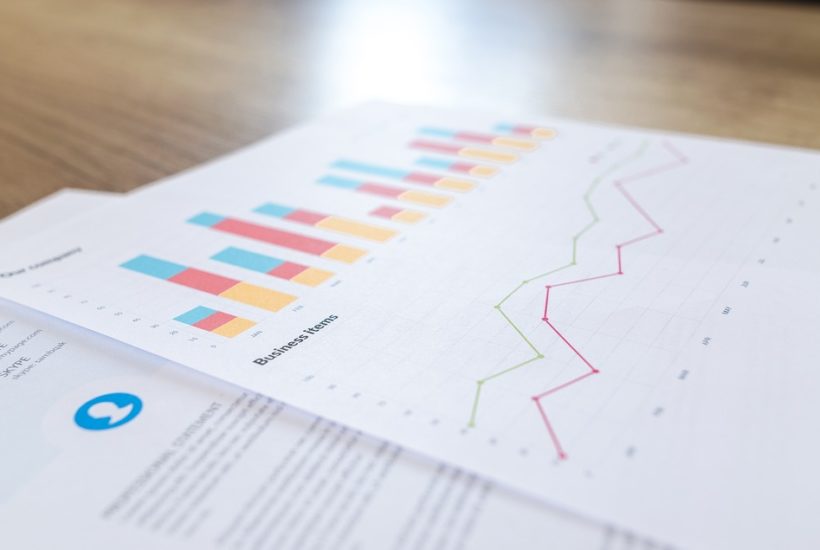Sponsored
4 misconceptions retailers still have about sales analytics
While several industries are quick to adopt modern sales analytics, some are lagging behind in taking advantage of the technology.

Data analytics adoption climbed in 2018, and it’s showing no signs of slowing down. But certain industries have been quicker on the uptake than others. Telecommunications, for instance, is looking at a near-complete 95 percent adoption rate, as Forbes cites. However, there’s lots of room for growth in retail, which saw closer to a 50 percent data analytics adoption rate.
Only about 12 percent of retail companies that responded to the survey have no plans to use data; the rest either currently do or plan to in the near future. This just goes to show that while retailers are increasingly seeing the value in better data analytics, there’s lots of opportunity for forward-thinking organizations to become early adopters.
What might be holding retailers back from implementing data analytics, exactly? To start, here are four misconceptions retailers still have about sales analytics today.
Misconception #1: Asking questions is only for executives
One general misconception about data analytics and business intelligence (BI) is that it’s really there so executives can ask questions—who then send out static reports based on their findings for other teams. But it’s a fallacy that only “higher-ups” like executives need or can afford regular access to data insights, one that ends up keeping other retail employees with questions and ideas out of the loop.
The truth is, data is most powerful when shared. And the latest wave of BI from providers like ThoughtSpot empower all users to ask questions and receive answers. This means everyone from merchandise planners to brand managers to sales associates scan use sales analytics to better understand performance, demand, inventory and more.
Today’s self-service analytics works to make data widely available to a variety of users rather than serving the C-suite alone.
Misconception #2: Analytics really means reporting
Data analytics are just a fancier way of saying BI reporting, right? Not exactly. And this misconception holds many teams back from going beyond static reporting. Without the ability to conduct ad hoc analyses, specific insights are inevitably slipping through the cracks. Tools that facilitate ad hoc inquiries enable users to create reports that didn’t previously exist, or ask questions within reports—helping employees squeeze more value out of every one.
In this day and age, limiting your BI to scheduled reports handed down from the IT team means missing out on cutting-edge insights. Ad hoc analytics enable more flexibility, allowing people to ask questions as they arise.
Misconception #3: Every analytics user adds more hassle/cost
Similar to the misconception that BI is meant for executives to ask questions, some retailers are holding onto the notion that BI and analytics are the domain of IT and data specialists. It’s true that in the past, employees had to request the reports they needed from data teams because they were separated from data analytics tools themselves.
Retailers miss out when they hold onto the outdated belief that every user with access to analytics adds hassle and cost—like per-user licensing fees. Top platforms today provide access to thousands or even millions of users, but the cost is determined by the data volume rather than the number of people with access. So, it’s just as convenient for merchandisers, brand managers, sales leads and customer service representatives to use analytics as it is for IT specialists and executives.

Misconception #4: Users need to know SQL/exact questions they want to ask
Thanks to self-service analytics, even non-technical users can query data using search. There’s no need to know Structured Query Language (SQL) to do it, either. Let’s stay a store operations manager wanted to quickly gauge employee performance for a report. It’s as simple as entering “Number of orders, by store associate, last week, daily.” Search-driven analytics does the rest, pulling the data and creating an automatic chart in seconds.
But there are also answers to thousands of unasked questions hiding within every retailer’s data stores. How can organizations bring them to light? The best analytics tools use artificial-intelligence (AI) algorithms capable of identifying and surfacing trends, outliers, causal relationships and more that might have otherwise gone unnoticed.
So, retailers with an AI-driven analytics component are enabling themselves to uncover answers to questions nobody’s even asked yet, giving them a competitive advantage. Paired with easy-to-use search, retailers can truly capitalize on their data.
These four misconceptions hold retailers back from reaping the benefits of modern sales analytics.

-

 Markets1 week ago
Markets1 week agoPrecious Metals Surge While Major Indexes Hold Strong Amid Holiday Lull
-

 Africa52 minutes ago
Africa52 minutes agoOil Dependence and Economic Resilience: Morocco’s Path to Sustainable Growth
-

 Biotech1 week ago
Biotech1 week agoEFPIA Calls for Clearer AI Governance to Safely Transform Drug Development
-

 Africa2 weeks ago
Africa2 weeks agoMorocco Emerges as Key Fertilizer Supplier as Brazil’s Reliance Grows




















